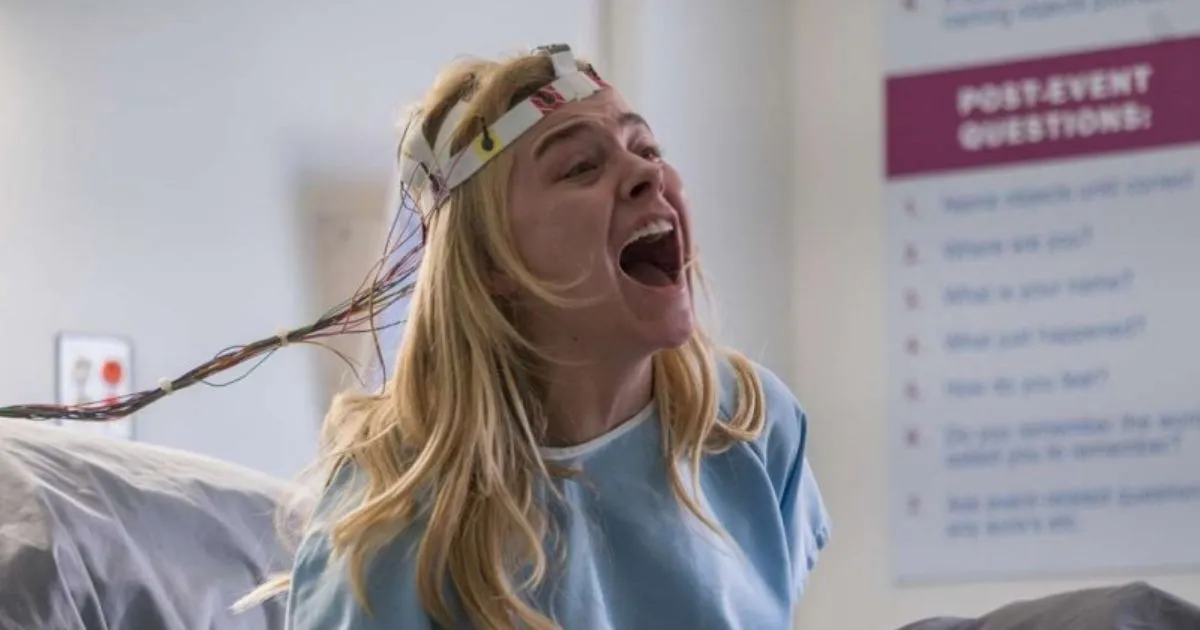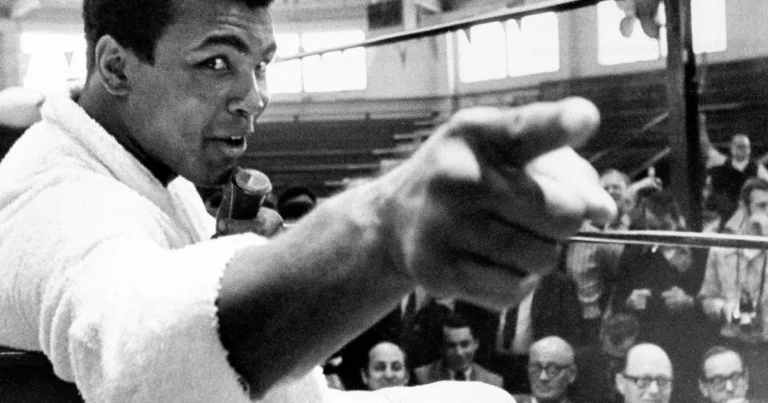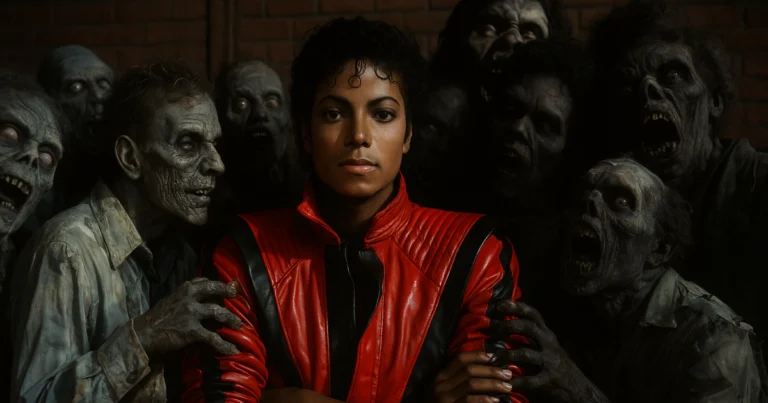Revealing the unseen: A closer look at Brain On Fire and autoimmune encephalitis
Imagine suddenly being struck by inexplicable symptoms. Your body, your mind, everything seems to slip away. This is exactly what Susannah Cahalan, a promising young journalist, experienced before being diagnosed with autoimmune encephalitis, a rare neurological disorder. The film Brain on Fire, directed by Gerard Barrett, portrays her harrowing story with remarkable emotional intensity and medical depth. In the following lines, we will examine how this film addresses such a complex topic and how it successfully raises awareness about a frequently misunderstood illness.
Unraveling the unknown: Susannah Cahalan’s quest for answers
Brain on Fire follows the real-life journey of Susannah Cahalan, played by Chloë Grace Moretz. This ambitious young reporter finds her life upended when strange symptoms, memory lapses, seizures, hallucinations, begin to take hold. Facing both medical confusion and psychiatric misinterpretations, the film chronicles her quest for a life-saving diagnosis.
Based on the autobiographical book Brain on Fire: My Month of Madness, the film adaptation preserves the heart of Cahalan’s account while incorporating artistic choices designed to heighten its emotional impact. This cinematic reality immerses viewers in the protagonist’s devastating experience, allowing them to witness firsthand the confusion and desperation she endures.
The artful vision behind Brain on Fire
The film’s approach transcends a simple medical narrative to deliver a realistic exploration of Susannah Cahalan’s psyche. Director Gerard Barrett employs carefully considered staging to pull the audience into the turbulent world of a young woman seeking answers about an often misunderstood illness. Close-up shots of her face capture her isolation with striking intensity, revealing each quiver in her voice and every tremor in her eyes, forging a powerful emotional bond with viewers.
Lighting plays a vital role in amplifying the film’s mood: dark, saturated tones dominate the hospital scenes, symbolizing confusion and fear, while occasional warmer hues hint at moments of clarity and hope. Chloë Grace Moretz gives a compelling performance, depicting Susannah’s transition from an independent, brilliant professional to a vulnerable patient battling disconcerting symptoms. This transformation is underscored by subtle acting choices, body language, disoriented movements, and long silences that reflect her internal struggle.
Supporting characters, such as her distraught parents and a determined physician, provide emotional layers that highlight the toll this illness takes on everyone involved. Meanwhile, the film excels through its visual and auditory storytelling techniques. Abrupt editing transitions between flashes of lucidity and chaotic episodes mirror Susannah’s neurological turmoil, generating a vertiginous effect for the audience. Discordant musical notes and suffocating silences heighten the anxiety, while moments of softer sound underscore the humanity and hope woven through her journey.
Occasional visual effects, image distortions, shifting focus, slow-motion scenes, plunge viewers into Susannah’s subjective experience of hallucinations and disorientation. The narrative structure, driven by flashbacks and ellipses, amplifies the sense of temporal confusion, reflecting how both Susannah and her loved ones struggle to grasp her condition. This choice also sustains dramatic tension, inviting the audience to share in the uncertainty until the final diagnosis. The soundtrack, featuring distant murmurs or muffled noises, evokes Susannah’s escalating isolation, while crescendos accentuate critical turning points.
Overall, Brain on Fire merges meticulous direction, impressive acting, and bold artistic decisions to deliver a striking cinematic experience. Rather than merely telling a medical story, it encourages viewers to empathize, understand, and reflect on the brain’s complexities and the importance of persistence in the face of the unknown.
Behind the diagnosis: Understanding autoimmune Encephalitis through Brain on Fire
The portrayal of autoimmune encephalitis lies at the heart of Brain on Fire, serving not only as a key plot element but also as a tool to raise awareness of a rare, often overlooked disease. Specifically, NMDA receptor encephalitis, a disorder in which the immune system attacks NMDA receptors in the brain, affects critical neural communication and can result in severe neurological and psychiatric symptoms. The film vividly illustrates these manifestations, including mental confusion, memory disturbances, epileptic seizures, paranoia, and hallucinations.
These symptoms are frequently mistaken for psychiatric disorders, a misconception the film addresses through Susannah’s gradual decline. In the opening scenes, she appears energetic and driven, a sharp contrast to her later transformation into a disoriented, sometimes aggressive individual unrecognizable to family and friends. This stark shift underscores how insidious the condition can be, striking without warning and uprooting the lives of patients and their loved ones.
Brain on Fire highlights the emotional impact of illness on a patient’s loved ones, illustrating how family support can play a crucial role in the recovery process.
To enhance medical realism, the filmmakers paid close attention to detail. Though dramatized for the screen, the hospital sequences draw from Susannah Cahalan’s memoir and consultations with medical experts. Scenes depicting diagnostic procedures, lumbar punctures, brain MRIs, neuropsychological assessments, bring to light the challenges of identifying an illness so frequently confused with psychiatric disorders. A pivotal moment comes when Dr. Souhel Najjar instructs Susannah to draw a clock, revealing a specific neurological deficit. This simple yet profound scene embodies the ingenuity and determination required to uncover mysterious medical conditions.
By spotlighting the diagnostic hurdles of autoimmune encephalitis, the film encourages broader discussions about research, awareness, and specialized medical training in autoimmune disorders affecting the brain. It also underscores the disease’s emotional toll on family members, illustrating the vital role of a strong support system throughout the arduous recovery process. Blending medical accuracy, emotional depth, and narrative precision, Brain on Fire conveys the urgency of better understanding a poorly recognized pathology. Rather than centering on the story of one lifesaving diagnosis, it underlines the significance of asking the right questions and persisting in the face of uncertainty.
The unsung detective: Dr. Najjar’s game-changing diagnosis
In Brain on Fire, the doctor who makes the decisive diagnosis delivers a central and deeply moving performance. Dr. Souhel Najjar, a neurologist, is the first to recognize that Susannah Cahalan’s symptoms stem from autoimmune encephalitis, after multiple specialists wrongly attribute her deteriorating condition to psychiatric or emotional issues. Employing thorough, empathetic methods, he confirms the diagnosis with a simple but brilliant test: asking Susannah to draw a clock, which exposes a clear neurological irregularity.
This pivotal scene underscores the power of scientific curiosity and vigilant observation, highlighting the life-changing impact of accurate diagnoses in rare diseases. Dr. Najjar emerges as a modest hero who transforms both Susannah’s fate and the audience’s awareness of a misunderstood illness.
Brain on Fire has played a crucial role in shedding light on autoimmune encephalitis, sparking wider media discussions and emphasizing the importance of early diagnosis for these rare conditions. More than a cinematic work, it stands as a potent tool for awareness, education, and inspiration. By delving into intricate topics such as autoimmune encephalitis, the film reminds us of the critical need for empathy and understanding in the face of the unknown.
References








